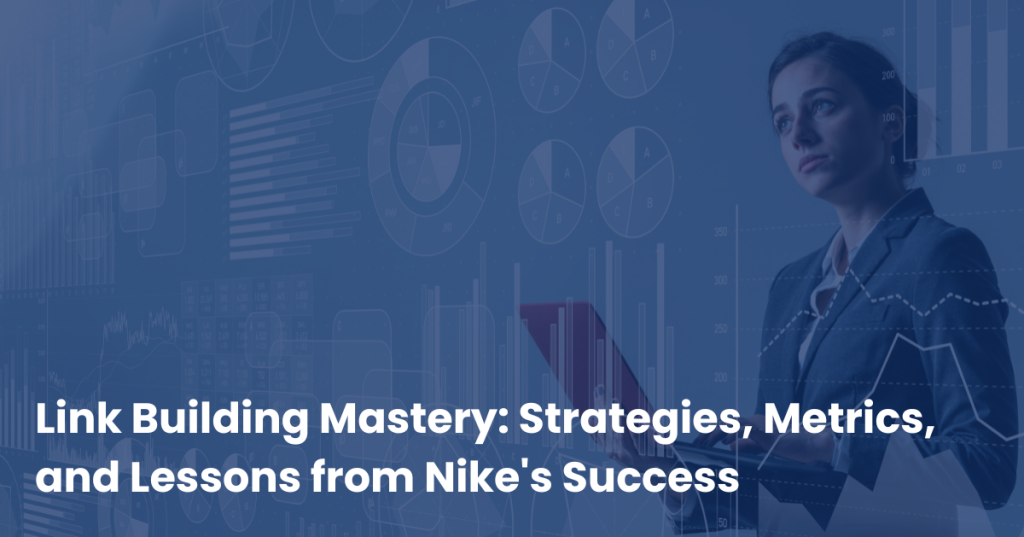In the fast-paced world of digital marketing, staying ahead of the competition requires a strategic approach. Link building is one such strategy that plays a crucial role in improving search engine rankings and driving organic traffic to your website.
However, both marketers and CEOs need to know if their investment in link building is generating a satisfactory return on investment.
In this blog post, we will explore the significance of link building for SEO, and its best practices, and provide insights on how to measure your ROI.

Does Link Building Still Work for SEO?
With search engines evolving constantly, it is natural to wonder if link building remains an effective SEO tactic. The answer is a resounding yes!
In the early days of search engines, link quantity played a significant role in determining a website’s ranking in search results. However, with the introduction of Google’s PageRank algorithm and subsequent updates like Google Penguin, the game changed. Search engines now prioritize not only the quantity but also the quality of links pointing to a website.
Today, link building is all about quality, relevance, and the authority of the linking websites. Search engines have become smarter in evaluating the trustworthiness and authority of websites based on their backlink profiles. A single high-quality, authoritative backlink can carry more weight than numerous low-quality links.
This shift in focus from quantity to quality means that strategic link building is more important than ever. Building relationships with reputable websites, earning links from industry influencers, and creating valuable content that naturally attracts more links, are crucial steps to succeed in the modern SEO landscape.
The Importance of Monitoring Your Link Building Efforts
Measuring and monitoring link building efforts is essential for assessing strategy effectiveness and impact. Backlinks, one of Google’s top three ranking factors, require a solid strategy to rank highly for competitive keywords. Without high-quality links, search engine rankings, organic traffic, and brand visibility suffer.
Monitoring efforts provides insights into key performance indicators (KPIs) like organic traffic, keyword rankings, referral traffic, conversions, and engagement metrics. For instance, tracking keyword rankings helps assess the effectiveness of link building strategies. Referral traffic measurement determines link value and relevance, while evaluating conversions and engagement metrics gauges the impact on user behavior and conversion success.
Moreover, monitoring enables calculating the ROI of link building campaigns by comparing costs to gains in organic traffic, conversions, and revenue. This data-driven approach aids resource allocation, budget optimization, and refinement of tactics for optimal results. Ultimately, measuring and monitoring link building efforts ensure a solid online presence and maximize the impact of strategies in a competitive digital landscape.
Leveraging High-Quality Links: Preferred by Search Engines
Now that we have established that building links is not just about the quantity. Let’s explore some factors that contribute to valuable links:
- Relevance: As for advice from a former Google employee, obtaining backlinks from topically relevant websites is crucial for effective link building. Search engines interpret these links as strong indicators of your site’s relevance, resulting in improved rankings.
- Authority: Aside from relevance, Authority is also a determinant of a link’s quality. In fact, acquiring links from authoritative websites carries more weight than newer or lesser-known websites. While this may come as legwork, earning links from reputable sources, such as industry influencers, established publications, or renowned organizations is worth it.
- Natural link profile: A diverse link profile with a mix of anchor texts, link types (internal and external), and a reasonable ratio of nofollow links to follow links indicates natural link building practices.
- Editorial links: A Link embedded within the content of an article or web page, as opposed to sidebar or footer links, tends to be more valuable in terms of SEO. These links have a higher potential to drive relevant traffic as they provide a more organic connection to the topic being discussed.
- Avoid spammy techniques: Steering clear of spammy, outdated techniques, such as link farms or buying links, is crucial. Search engines are becoming increasingly adept at identifying such manipulative practices and penalizing websites that engage in them.
Measuring the ROI of Link Building:
With the understanding of why link building matters and the importance of quality links, let’s shift our attention to measuring the return on investment (ROI) for these efforts. Here are some key steps to guide you:
- Define your objectives: Clearly identify the goals you aim to achieve through link building, such as increased organic traffic, higher search engine rankings, or improved conversion rates. Aligning your objectives with your overall marketing strategy is crucial.
- Track organic traffic: Analyze your website’s traffic patterns using tools like Google Analytics. Monitor the organic traffic originating from search engines to identify any significant changes following your link building campaigns.
- Monitor keyword rankings: Keep a close eye on your target keywords’ rankings in search engine results pages (SERPs). An upward trend in rankings indicates the effectiveness of your link building efforts.
- Identify broken links: Conduct a thorough broken link building analysis of websites within your industry. Use tools like Broken Link Checker or check manually by visiting pages with high authority.
- Measure referral traffic: Track the traffic coming to your website from external and internal links. Referral traffic serves as a strong indicator of the value and relevance of the links directing users to your site.
- Assess conversions and engagement: Analyze the impact of link building on your conversion rates and user engagement metrics. Are users spending more time on your website? Are they more likely to complete desired actions, such as making a purchase or filling out a form?
- Calculate ROI: To calculate the ROI of your link building campaigns, compare the costs associated with your link building efforts to the financial gains achieved as a result. Consider the increase in organic traffic, conversions, and revenue generated from the targeted keywords.
Nike’s Link Building Success Story: How a brand should build links
Nike, the global powerhouse in athletic footwear and apparel, has leveraged link building as a key component of their digital marketing strategy. Their approach to link building revolves around collaborating with relevant websites, influencers, and partners within the sports and fitness industry. They strategically seek out opportunities to identify links and acquire high-quality backlinks from reputable sources, including sports publications, fitness blogs, and authoritative external websites,
What we can learn from Nike’s strategies?
- Collaborating with relevant websites, influencers, and partners within the industry: One of Nike’s notable link building tactics is through sponsorship and partnerships with professional athletes and sports teams. By doing so, Nike secures high-quality links from their official websites, blog posts, and social media profiles.These endorsements also create a strong association between Nike and the world of sports, reinforcing their brand and positioning themselves as a leader in athletic performance.
- Investing in content marketing initiatives: Additionally, Nike invests in content marketing initiatives to generate shareable content. They create compelling articles, videos, and interactive experiences that resonate with their target audience, often incorporating expert insights and inspiring stories from athletes.By producing link-worthy content for other sites, Nike naturally attracts backlinks from other websites and publications, further amplifying their online visibility and organic search rankings.
- Tracking important metrics such as engagement, search traffic, and referral links: Nike’s link building success can be measured through various key performance indicators (KPIs) and metrics.By monitoring their organic search traffic, referral traffic from internal and external links, and keyword rankings, Nike can assess the impact of their link building efforts on driving website visits and brand exposure.Furthermore, tracking engagement metrics such as time spent on site, page views, and conversion rates provides insights into the effectiveness of their link building campaigns in capturing and converting leads.
Achieving Optimal Results Through Effective Link Building Strategies
In conclusion, maximizing link building returns requires a strategic approach and diligent measurement of ROI. Link building remains a crucial strategy in improving search engine rankings, driving organic traffic, and enhancing brand visibility. By focusing on quality links from relevant and authoritative sources, businesses can establish credibility, attract links, and boost their online presence.
To measure the ROI of link building efforts, it is essential to define objectives, track organic traffic, monitor keyword rankings, generate links, assess referral traffic, and evaluate conversions and engagement metrics.
Ultimately, by adopting effective link building strategies, setting clear objectives, and consistently measuring ROI, businesses across industries can maximize their link building returns and achieve enhanced business growth in the competitive digital landscape.



